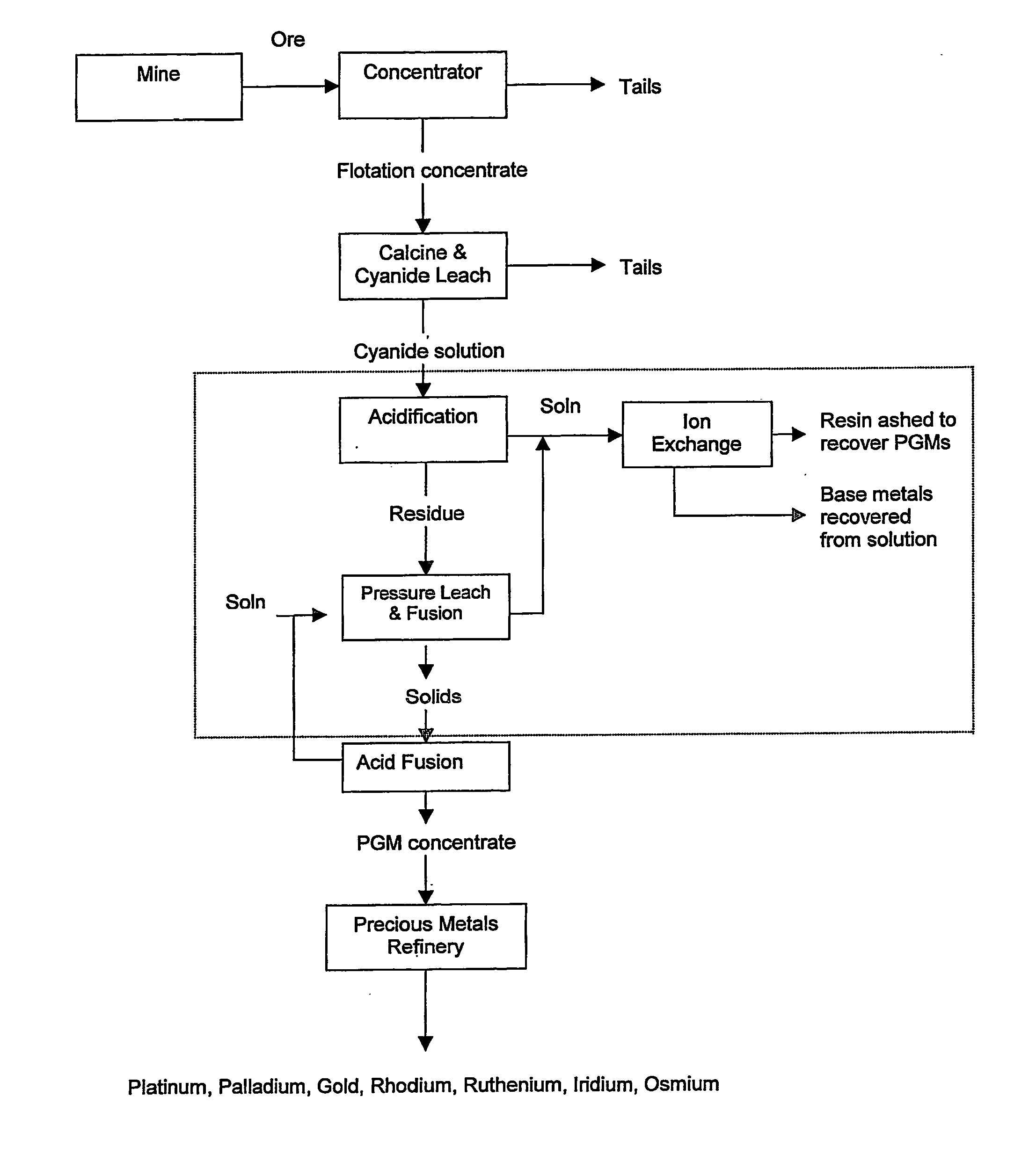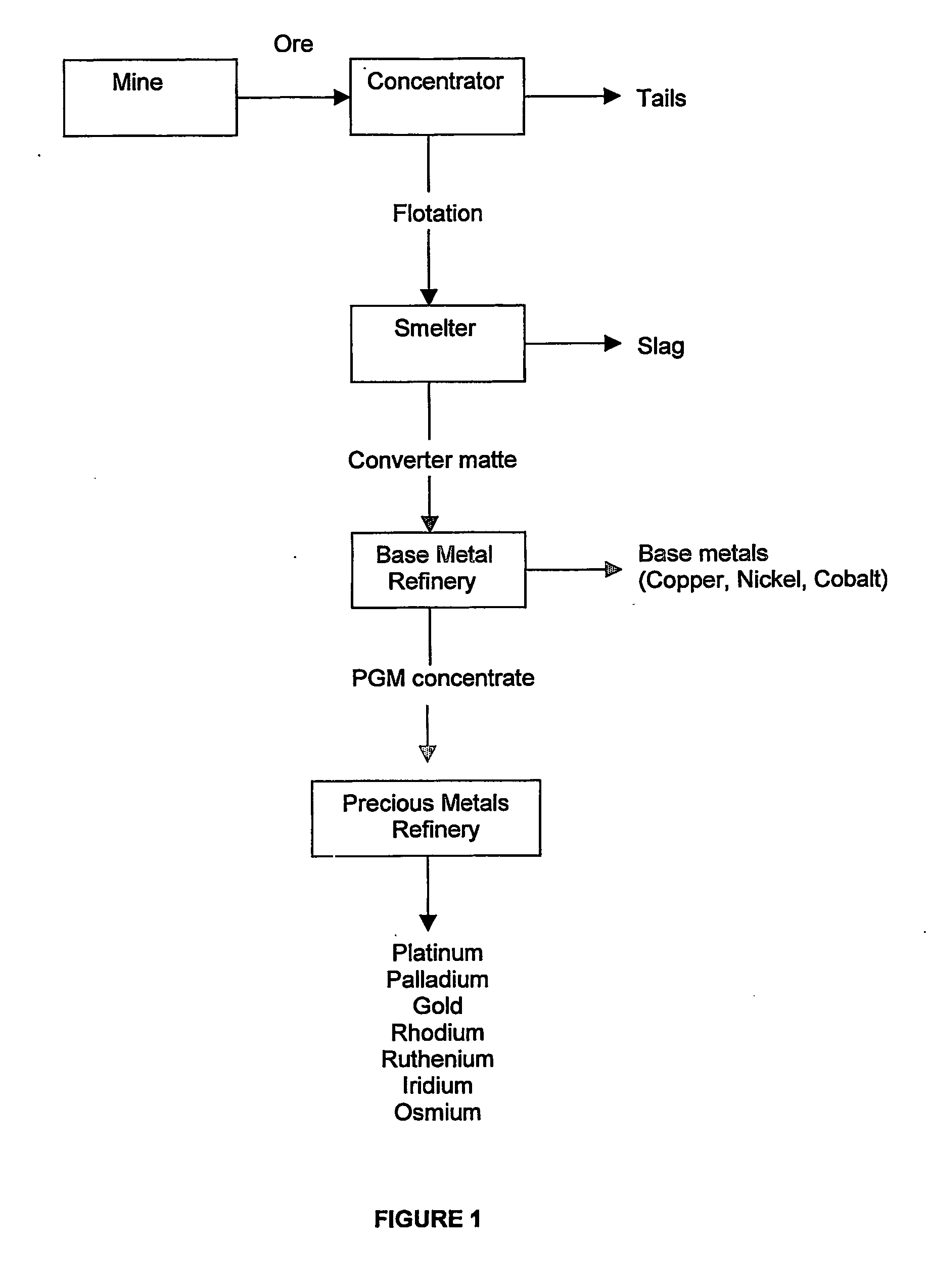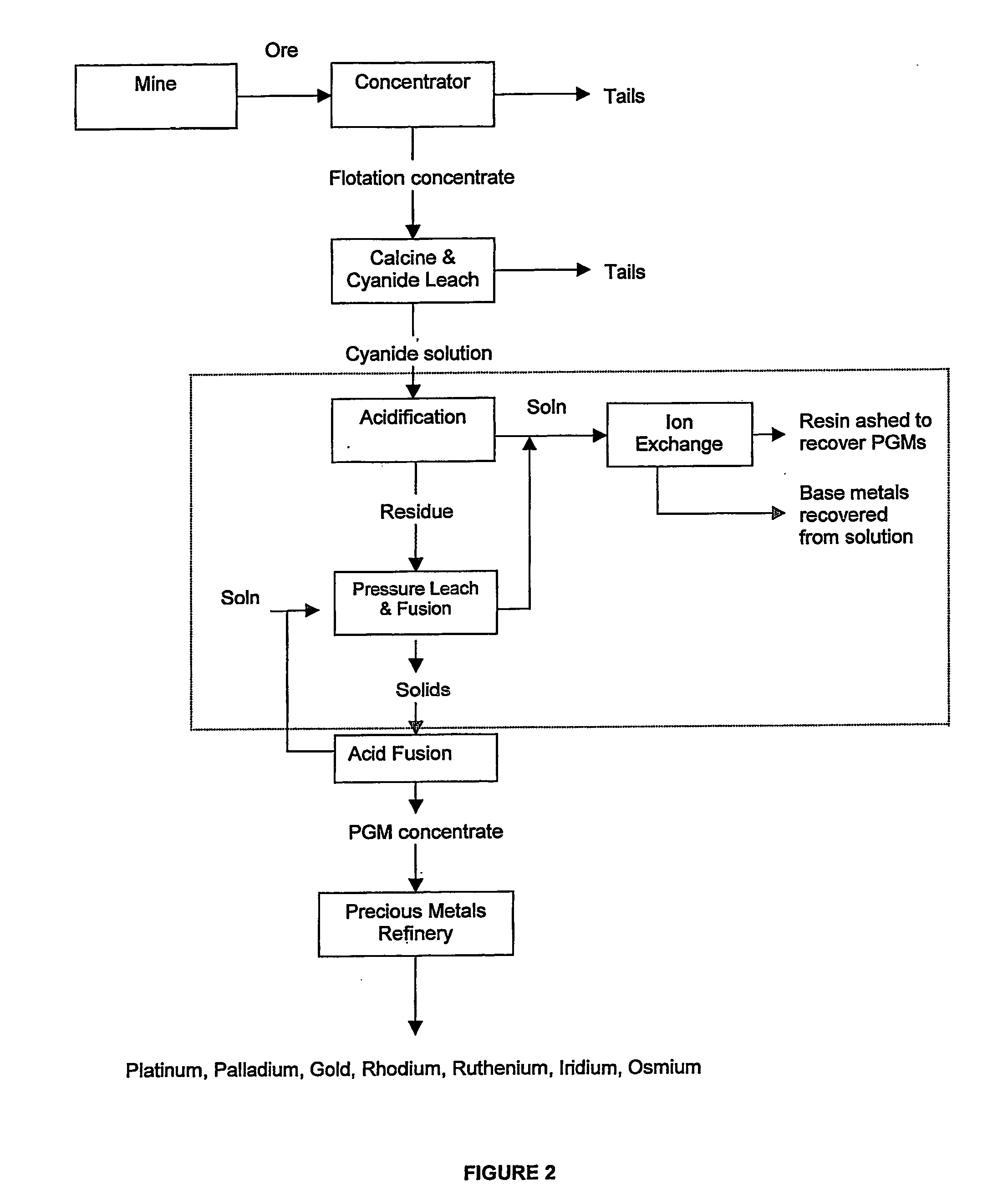Recovery of platinum group metals
a platinum group metal and recovery technology, applied in the field of platinum group metal recovery, can solve the problems of uneconomic smelting operations, high cost and lower recoveries, and limitations of the conventional processing route of pgms
- Summary
- Abstract
- Description
- Claims
- Application Information
AI Technical Summary
Benefits of technology
Problems solved by technology
Method used
Image
Examples
example 1
Precipitation with Sulphide at Raised Temperature
[0065] A test was conducted using NaHS to precipitate value metals from cyanide leachate at a raised temperature.
[0066] A cyanide leach solution was prepared by calcining underground flotation concentrate at 400° C. for 2 hrs in a muffle furnace and then leaching using 0.2% w / w sodium cyanide solution at 60° C. for 48 hrs, maintaining the pH at 9.5 with hydrated lime.
[0067] 115% stoichiometric level of 20% w / v NaHS was added to 200 ml cyanide leach solution. H2SO4 was added to adjust the pH to 1 and the temperature maintained at 90° C. The solution was sampled after 120 minutes.
[0068] The test results are summarised in Table 1. It can be seen that good recoveries were achieved for Pt, Pd, Au, Cu and Co.
TABLE 1Recoveries into Residue using NaHSMetalPtPdAuCuNiCoRecovery97.5%99.7%99.5%99.3%11.8%92.8%
example 2
Precipitation with Sulphide at Ambient Temperature
[0069] A second series of tests was conducted on the cyanide leachate using NaHS over a range of pHs at ambient temperature to precipitate the value metals.
[0070] A cyanide leach solution was prepared by calcining a finely ground ‘open cut’ flotation concentrate at 400° C. for 2 hrs in a muffle furnace and then leaching using 0.2% NaCN solution at 60° C. for 48 hrs, maintaining the pH at 9.5.
[0071] 115% stoichiometric level of 20% w / v NaHS solution was added to a series of 200 ml cyanide leach solutions, H2SO4 or NaOH was added to adjust the pH in the range 0.5-11.5. The reaction time was 5 mins.
[0072]FIG. 6 shows that good recoveries were obtained for Cu, Co, Pd and Au at low pH values. The test results have been summarised in Table 2.
TABLE 2Sulphide Precipitation Metal RecoveriesPrecipCuNiCoFePtPdAupH(%)(%)(%)(%)(%)(%)(%)0.599.7711.9895.450.0047.6599.4698.101.599.9731.0292.3971.4238.4431.5586.523.599.752.454.0346.771.200.8615...
example 3
Precipitation using H2O2 and Na2S2O5
[0073] A series of tests was conducted using H2O2 and Na2S2O5 to precipitate the value metals from cyanide solution over a range of pH values.
[0074] A cyanide leach solution was prepared by calcining underground flotation concentrate at 400° C. for 2 hrs in a muffle furnace and then leaching using 0.2% NaCN solution at 60° C. for 48 hrs maintaining the pH at 9.5.
[0075] Hydrogen peroxide (H2O2) was added to the cyanide leach solution in the ratio of 1.5 mg / mg of CNWAD at ambient temperature and sulphuric acid was added to maintain the pH at set points between the ranges of 1-7. The reaction time was 120 min.
[0076] Sodium metabisulphate (Na2S2O5) was then added in the ratio of 6 mg / mg of CNWAD. Sulphuric acid was added to maintain the same pH. Again the reaction time was 120 min.
TABLE 3Metal Recovery with H2O2 and Na2S2O5 TreatmentMetal removed from solution %TestpHPtPdAuCuNiCoH2O20.999.699.64.291.281.199.7Na2S2O51.0048.36.229.04.60Overall99.6...
PUM
| Property | Measurement | Unit |
|---|---|---|
| pH | aaaaa | aaaaa |
| temperature | aaaaa | aaaaa |
| temperature | aaaaa | aaaaa |
Abstract
Description
Claims
Application Information
 Login to View More
Login to View More - R&D
- Intellectual Property
- Life Sciences
- Materials
- Tech Scout
- Unparalleled Data Quality
- Higher Quality Content
- 60% Fewer Hallucinations
Browse by: Latest US Patents, China's latest patents, Technical Efficacy Thesaurus, Application Domain, Technology Topic, Popular Technical Reports.
© 2025 PatSnap. All rights reserved.Legal|Privacy policy|Modern Slavery Act Transparency Statement|Sitemap|About US| Contact US: help@patsnap.com



